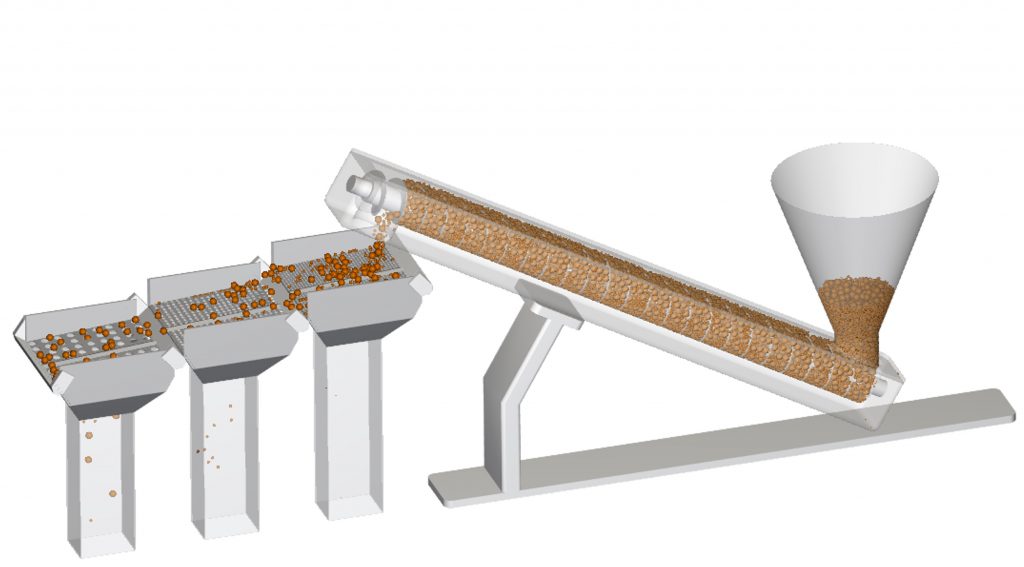
Why should you simulate a conveyor and a sieving process?
Conveyor systems are omnipresent in mechanical process engineering, where they are used to transport bulk materials in dry or moist condition.
A variety of different conveying principles are used, such as screw and bucket conveyors or conveyor belts. The selection depends largely on the dosing quantity and dosing accuracy to be achieved as well as the conveying speed.
Vibratory screening processes are often connected to the conveying systems, in which the bulk material is to be separated into defined fractions. Depending on the bulk material and the ratio of the size fractions, the vibration parameters or the mass flow supplied must be set.
Especially in the case of a planned change of the bulk material to be conveyed, machine settings and, if necessary, design changes of the conveying systems and sieving processes are necessary. By means of the simulation, a digital analysis can already be carried out in advance of a planned change of the bulk material or in case of a new design or adaptation of the design.
Simulation of a screw conveyor with attached vibrating sieve
What are the benefits?
In contrast to trial-based setting of machine parameters or experience-based design of machines, simulation offers the following advantages:
- no downtime for machine adjustment
- early identification of problems during operation
- no material consumption, either for the implementation of the plant or bulk materials for the test operation
- build-up of plant and process knowledge with every further simulation
- independent of scheduling limitiations
With the simulation, costs for materials, for the implementation of plants as well as for the test operation can be saved, the personnel and energy expenses can be significantly reduced and the machine downtimes can be minimized.
What is the simulation capable of?
The simulation of the conveying process enables, among other things, the local analysis of the load on the screw conveyor in all process states and the identification of critical areas where increased wear is to be expected.
Furthermore, the power consumption of the drive can be determined in order to carry out an adapted design of the system. By simulating several screw geometries, it is possible to determine the ideal geometry depending on the material to be conveyed and thus to design customized conveying systems without time-consuming experimental investigations.
Existing pressures on the screw conveyor
Volumetric sieve loading throughout the operating time
To increase the efficiency of sieving systems of any kind, it is necessary to maximize the capacity utilization. The ratio between the amount of bulk material fed by the upstream conveying system and the maximum amount of bulk material that can be screened is decisive.
Simulation using the Discrete Element Method offers the possibility to determine the ideal feeding quantity to the sieve system and/or to optimize the vibration parameters of the individual sieves by evaluating the volumetric sieve loading.
Furthermore, reasons for undesired incorrect sieving, due to further transport of individual fractions across the sieving stages, can be identified and eliminated.
Conclusion
The simulation of conveying and/or sieving processes thus allows extensive analyses to be carried out, which make it possible to understand the process and its mechanisms faster and more comprehensively in comparison to what was previously possible with classical procedures. In addition to what is shown here, countless other possibilities exist with different kinds and geometries of bulk materials as well as machine types.
Do you have any questions?
Please contact us via the contact form or E-Mail.

